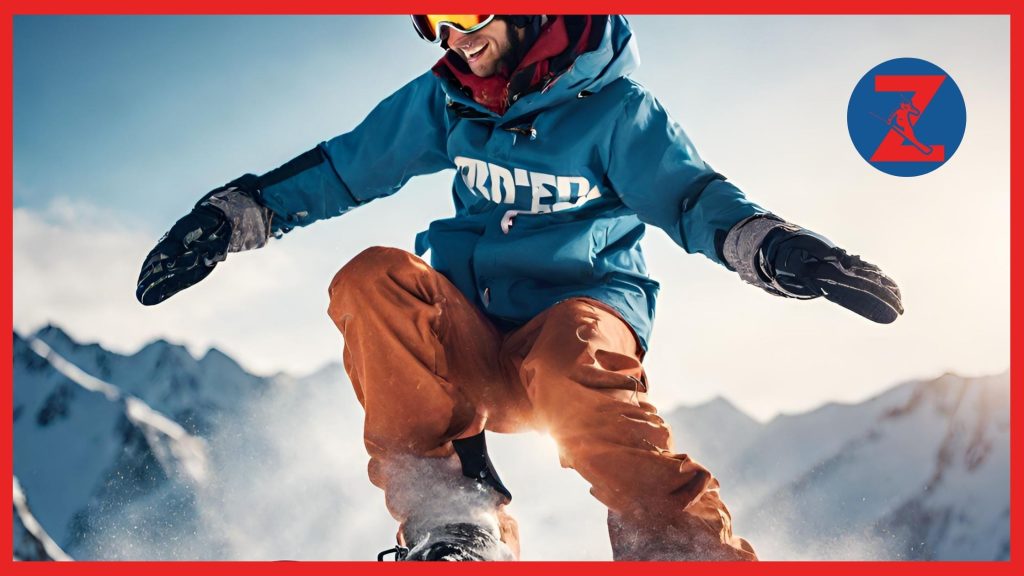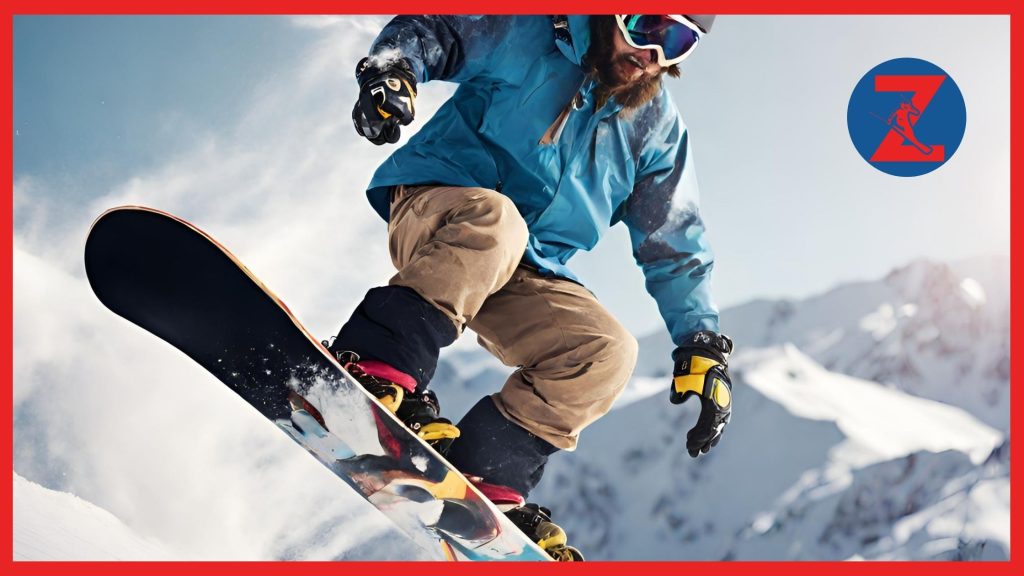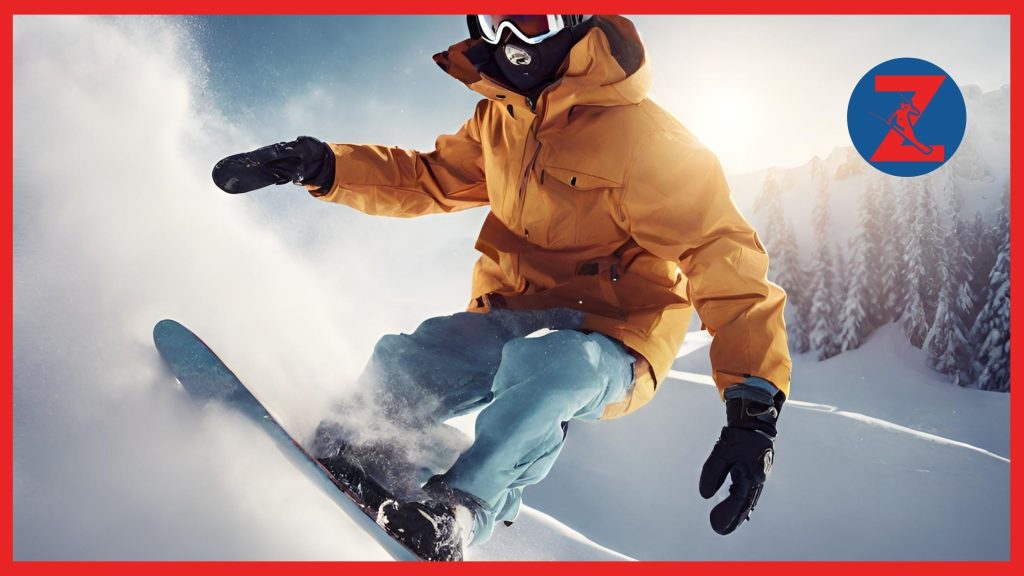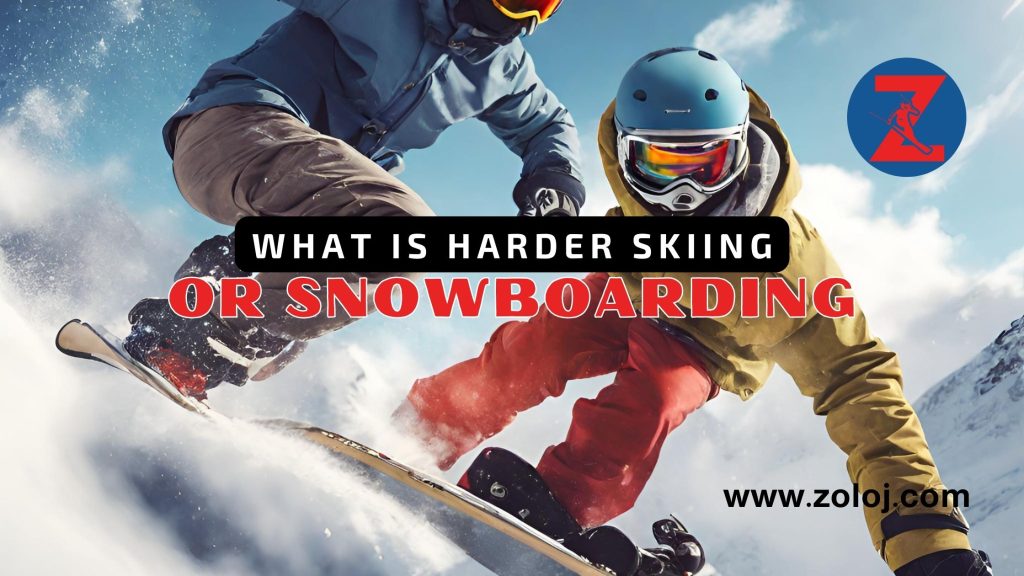When it comes to winter sports, skiing and snowboarding are often at the top of the list. But have you ever wondered which one is harder? Is it easier to navigate a mountain on two skis or one snowboard? The answer may surprise you.
In this article, we will explore the difficulty aspect of skiing and snowboarding, comparing their differences and examining the challenges faced by beginners in each sport. We will also delve into the factors that contribute to the perceived difficulty of each activity and help you make an informed choice if you’re considering taking up skiing or snowboarding.
So, are you ready to find out if it’s harder to ski or snowboard? Let’s hit the slopes and discover the truth behind these popular winter sports.
Key Differences Between Skiing and Snowboarding

When comparing skiing and snowboarding, it becomes evident that these winter sports have their distinct differences. From equipment to stance and technique, understanding these variations can help individuals make an informed choice. Let’s explore the key differences:
Equipment
One of the primary differences between skiing and snowboarding lies in the equipment used. Skiers typically wear a pair of skis, which attach to their boots using bindings. On the other hand, snowboarders utilize a single board that attaches to their boots through bindings. The choice of equipment affects the overall experience and movements on the slopes.
Stance
Another significant contrast is the stance adopted by skiers and snowboarders. Skiers face forward with their feet parallel to each other, allowing them to move in a straight line and execute turns using their edges. In contrast, snowboarders ride with their feet strapped in sideways, in what is known as a sideways stance. This sideways stance enables snowboarders to steer their boards by shifting their weight and making specific movements with their feet.
Technique
The technique employed in skiing and snowboarding also differs significantly. Skiers utilize poles to assist in balance, propulsion, and steering. They rely on their leg movements and weight distribution to control the skis and execute turns. Snowboarders, on the other hand, rely on their body movements to shift their weight and pressure the different parts of the board, allowing for smooth turns and maneuvers.
It’s fascinating to observe the contrasting techniques between skiers and snowboarders. While skiers utilize poles and leg movements for control, snowboarders rely solely on their body movements to master their boards.
Maneuverability
The maneuverability aspect is another key distinction between skiing and snowboarding. Skiers have the advantage of being able to move their skis independently of each other, enabling them to perform dynamic parallel turns and navigate tricky terrains with ease. Snowboarders, on the other hand, have a greater challenge in maneuvering their single board due to its larger surface area. However, snowboarders can employ their body movements and weight shifts to execute quick turns and tricks.
| Skiing | Snowboarding |
|---|---|
| Two independent skis | Single board |
| Feet parallel | Sideways stance |
| Utilizes poles | Relies on body movements |
| Greater maneuverability | Body movements for turns |
By understanding these key differences between skiing and snowboarding, individuals can better appreciate the unique aspects of each sport. Whether one prefers the versatility of skiing or the dynamic movements of snowboarding, both sports offer thrilling and enjoyable experiences on the slopes.
Challenges for Beginners in Skiing

When it comes to choosing between skiing and snowboarding as a beginner, there are specific challenges that you may encounter on the slopes. Learning to ski requires developing a sense of balance, coordination, and muscle engagement, which can take time and practice to master.
One of the initial challenges beginners face in skiing is finding their balance on the skis. Balancing on two separate skis can be tricky at first, as you navigate the slopes and adjust to the feeling of sliding downhill. However, with proper instruction and practice, you can gradually develop the necessary balance to conquer the mountains.
Coordination is another essential skill to focus on as a beginner skier. Coordinating your movements to initiate turns, control your speed, and maintain stability on the skis can be initially challenging. However, once you understand the fundamental techniques and practice them consistently, your coordination will improve, and you will feel more confident on the slopes.
Additionally, engaging the right muscles while skiing is crucial for maintaining control and executing proper techniques. Skiing requires using leg muscles, including the quadriceps, hamstrings, and calf muscles, to maintain stability and control your movements. As a beginner, it may take time to strengthen these muscles and develop the necessary endurance for longer runs.
While these challenges may seem daunting initially, they are all part of the learning process. With proper instruction, patience, and consistent practice, you can overcome these challenges and progress as a skier.
Expert Tip:
Focus on taking lessons from qualified instructors who can guide you through the learning process. They can provide valuable feedback and help you develop the skills needed to navigate the slopes with confidence. Remember, everyone starts as a beginner, and with perseverance, you’ll soon be skiing down the slopes with ease.
Challenges for Beginners in Snowboarding
Learning to snowboard can be an exciting and fulfilling experience for beginners. However, like any new sport, it comes with its own set of challenges. Understanding these challenges and how to overcome them is essential for those venturing into the world of snowboarding.
1. Balance:
One of the initial challenges beginners face in snowboarding is finding their balance on the board. Unlike skiing, where the skis provide a wider base of support, snowboarding requires a narrower stance and relies heavily on core strength and balance. It may take time and practice to develop the necessary stability and control on the board, especially when navigating uneven terrain.
2. Foot Positioning:
Getting accustomed to the proper foot positioning is another challenge for beginners in snowboarding. With both feet strapped onto the board, finding the right balance and positioning can be tricky. Understanding the correct placement of the feet and practicing various stances is important for achieving control and stability while snowboarding.
3. Edge Control:
Mastering edge control is crucial for beginner snowboarders. Understanding how to transition between the heel edge and toe edge, effectively carving turns, and maintaining control at different speeds can be challenging. It requires coordination, weight shifting, and proper body positioning. With practice and guidance, beginners can gradually improve their edge control skills.
“Snowboarding has a unique learning curve, and challenges are just part of the journey. Embrace them as opportunities to progress and improve your skills.” – Pro Snowboarder
4. Falling and Getting Up:
Learning to fall safely and getting back up is an essential skill in snowboarding. Beginners may experience frequent falls while they are still adjusting to the board and improving their balance. Understanding how to fall in a controlled manner, protecting vulnerable areas, and confidently getting back on their feet will help beginners overcome the initial learning curve.
5. Learning Curve:
Compared to skiing, snowboarding generally has a steeper learning curve for beginners. The asymmetrical nature of the board and the unique techniques involved can take time to grasp. However, with commitment, patience, and proper instruction, beginners can progress and unlock the exhilarating sensations of carving down the slopes on a snowboard.
| Challenges for Beginners in Snowboarding | Solutions |
|---|---|
| 1. Balance | Develop core strength through exercises like yoga and balance exercises. |
| 2. Foot Positioning | Practice different stances and experiment with bindings to find the most comfortable position. |
| 3. Edge Control | Take lessons from experienced instructors to learn proper technique and improve control. |
| 4. Falling and Getting Up | Learn how to fall safely and practice getting up efficiently to minimize downtime. |
| 5. Learning Curve | Stay committed, seek guidance, and practice regularly to progress through the learning process. |
Factors Affecting Difficulty in Skiing

When it comes to the question of whether skiing or snowboarding is more difficult, several factors come into play. Skiing, in particular, is considered by some individuals to be more challenging due to various variables that contribute to the overall difficulty.
Speed
Speed plays a significant role in determining the difficulty of skiing. Skiers often experience higher speeds than snowboarders, especially when carving down steep slopes or racing down the mountain. The need to maintain balance and control at high speeds requires a higher level of skill and focus, making skiing more demanding for some individuals.
Control
A key aspect that sets skiing apart from snowboarding is the level of control required. Skiers have independent control over each foot, allowing them to make quick turns and navigate through various terrains with precision. This greater range of control can make skiing feel more complex and challenging, as it requires enhanced coordination and technique to maintain stability and maneuver effectively.
Terrain
The type of terrain encountered while skiing can also contribute to the perceived difficulty. Skiers often encounter a wider variety of conditions, such as moguls, icy patches, and uneven terrain. Negotiating these diverse challenges requires adaptability and the ability to adjust technique accordingly. Snowboarders, on the other hand, may have a more consistent experience on the mountain, as they glide over the snow with a single board.
Versatility
The versatility of skiing adds another layer of difficulty. Skiers have the ability to switch between different techniques and styles, such as downhill, slalom, and freestyle. Each style requires a unique set of skills and techniques, making skiing a more versatile sport overall. This versatility can create a steeper learning curve for beginners and contribute to the perception of skiing as more challenging than snowboarding.
| Factors Affecting Difficulty in Skiing | Difficulty Level |
|---|---|
| Speed | Moderate to High |
| Control | High |
| Terrain | Varied |
| Versatility | High |
Factors Affecting Difficulty in Snowboarding
When it comes to the question of which is more difficult, skiing or snowboarding, there are several factors that can contribute to the perceived challenge of snowboarding. Understanding these elements can offer deeper insights into why some individuals may find snowboarding more demanding. Let’s explore these factors:
- Balance: Snowboarding requires a strong sense of balance as riders navigate slopes and perform maneuvers on a single board. Unlike skiing, where there are two separate skis for stability, snowboarders must rely solely on their ability to maintain equilibrium on a single surface.
“Maintaining balance is a fundamental skill in snowboarding. It’s crucial to distribute your weight properly and adapt to various terrains.” – Professional Snowboarder, Chloe Kim
- Coordination: Snowboarding demands precise coordination between the upper and lower body. Riders need to synchronize their movements to maintain control, execute turns, and perform tricks. This coordination can take time and practice to develop.
- Adaptability: Snowboarding requires adaptability as riders navigate changing snow conditions and terrain. Unlike skiing, where separate skis provide more versatility, snowboarders must rely on their ability to adjust and respond to different situations using a single board.
Learning Curve:
The learning curve of snowboarding can also contribute to its perceived difficulty. For beginners, mastering the basics of snowboarding, such as balancing, turning, and controlling speed, can take time and patience. The initial progress may seem slower compared to skiing, which could lead to a perception of snowboarding being more challenging.
While snowboarding may present unique challenges, it is important to note that perceived difficulty can vary based on individual experiences and preferences. Some riders may find snowboarding easier to pick up, while others may find skiing more natural. Ultimately, the difficulty of skiing or snowboarding is subjective and dependent on personal factors.
Making the Choice: Skiing or Snowboarding for Beginners
After examining the challenges and differences between skiing and snowboarding, it’s time for beginners to make an informed choice. Both sports have their unique appeal, and the decision ultimately depends on individual preferences, fitness level, and goals.
Considering Personal Preferences
When deciding between skiing and snowboarding, it’s important to consider personal preferences for movement and style. Skiing offers a more symmetrical experience, with two separate skis and poles providing stability and control. Snowboarding, on the other hand, is characterized by a single board and a sideways stance, allowing for a more fluid and surf-like experience on the slopes.
Assessing Fitness Level
The fitness level of a beginner is another crucial factor to consider. Skiing typically requires more leg strength and endurance due to the constant motion of each individual ski. Snowboarding, on the other hand, relies heavily on core and upper body strength to maintain balance and control. Beginners should assess their current fitness level and choose a sport that aligns with their capabilities and goals.
Setting Goals
Setting specific goals can also help in making the decision between skiing and snowboarding. If speed and racing down the slopes is appealing, skiing may be the preferred choice, as it allows for greater control and maneuverability. On the flip side, if the desire is to perform tricks and jumps in terrain parks, snowboarding may offer a more suitable outlet for creativity and expression.
Seeking Professional Guidance
Finally, beginners are advised to seek professional guidance when making the choice between skiing and snowboarding. Instructors and experts can provide valuable insights and recommendations based on individual circumstances. Taking lessons from qualified professionals ensures a safe and enjoyable learning experience regardless of the chosen sport.
Ultimately, the decision between skiing and snowboarding as a beginner is an individual one. It’s important to consider personal preferences, fitness level, goals, and seek guidance from professionals. Both sports offer unique challenges and rewards, and the journey of learning and mastering either one can bring immense joy and fulfillment on the slopes.
Conclusion
In the debate of skiing vs snowboarding difficulty, it becomes clear that personal experiences and preferences heavily influence the perception of which sport is harder. Throughout this article, we have examined the key differences, challenges, and factors affecting the difficulty in both skiing and snowboarding.
Both skiing and snowboarding present unique challenges. Skiing requires a strong sense of balance while maneuvering on two separate, parallel skis. On the other hand, snowboarding demands coordination and adaptability, as riders rely on a single board to navigate various terrains.
Ultimately, the decision between skiing and snowboarding should be based on an individual’s interests and goals. It’s important to remember that while one sport may be perceived as more difficult than the other, both offer thrilling experiences and endless opportunities for growth.
If you’re still unsure which sport to pursue, we encourage you to try both skiing and snowboarding. Experimenting with both will not only broaden your horizons but also allow you to discover the excitement each activity has to offer. So, grab your skis or get on that snowboard and experience the joy of gliding down the slopes!
FAQ
Q: What is harder skiing or snowboarding?
A: The difficulty of skiing versus snowboarding is subjective and can vary depending on an individual’s experience, physical abilities, and personal preferences. Some people may find skiing more challenging, while others may find snowboarding more difficult. It ultimately comes down to the individual and their comfort level with each sport.
Q: What are the key differences between skiing and snowboarding?
A: Skiing and snowboarding differ in several ways. Skiers use two separate skis and poles, while snowboarders use a single board. Additionally, skiing involves a forward-facing stance with each leg independent, while snowboarding requires a sideways stance with both feet strapped onto the board. The techniques for turning, stopping, and navigating the terrain also differ between the two sports.
Q: What challenges do beginners face in skiing?
A: Beginners in skiing often struggle with finding their balance and coordination on the slopes. Learning to control speed, initiate turns, and engage the correct muscles can also present challenges. However, with proper instruction and practice, these difficulties can be overcome, and skiing can become an enjoyable and rewarding experience.
Q: What challenges do beginners face in snowboarding?
A: Beginners in snowboarding may initially struggle with finding their balance and maintaining stability on the board. Adjusting to the sideways stance and understanding how to control the edges can also prove challenging. However, with practice and perseverance, beginners can gradually develop the necessary skills and progress in their snowboarding abilities.
Q: What factors affect the difficulty in skiing?
A: Several factors can contribute to the perceived difficulty of skiing. These include the speed at which one skis, the level of control they have over their turns and stops, the type of terrain they navigate, and their ability to adapt to different skiing styles and conditions. Individuals who prefer a faster-paced and more versatile experience may find skiing more challenging.
Q: What factors affect the difficulty in snowboarding?
A: The difficulty of snowboarding can be influenced by factors such as balance, coordination, adaptability, and the learning curve associated with mastering the board. Snowboarders must learn to control their body movements, engage the correct muscles, and adjust their balance while riding on various terrains. These variables can contribute to the perceived difficulty of snowboarding.
Q: Should beginners choose skiing or snowboarding?
A: The choice between skiing and snowboarding for beginners ultimately depends on personal preferences, fitness level, and goals. Some may find skiing more accessible and suitable for their abilities, while others may be drawn to the challenge and unique experience that snowboarding offers. It is recommended to try both sports and see which one resonates more with the individual.






